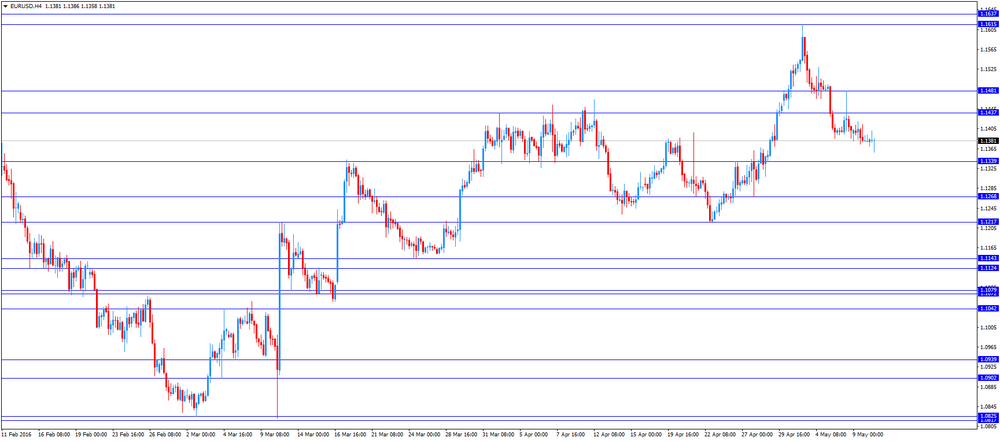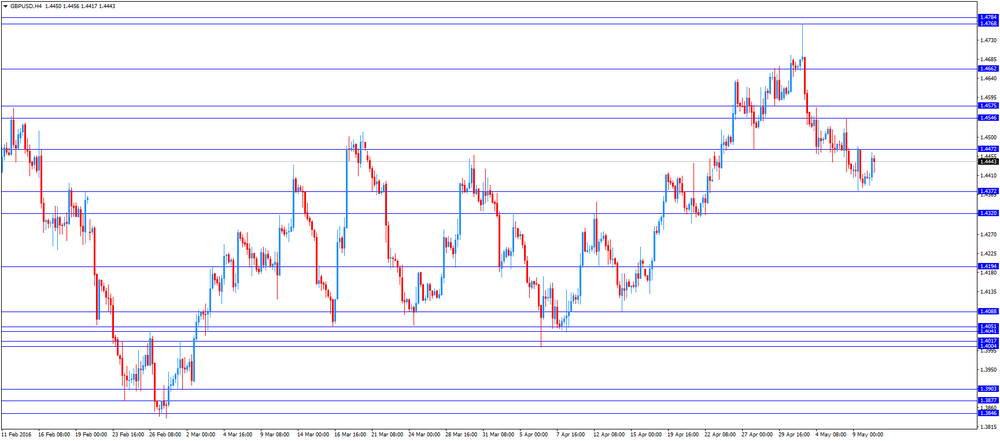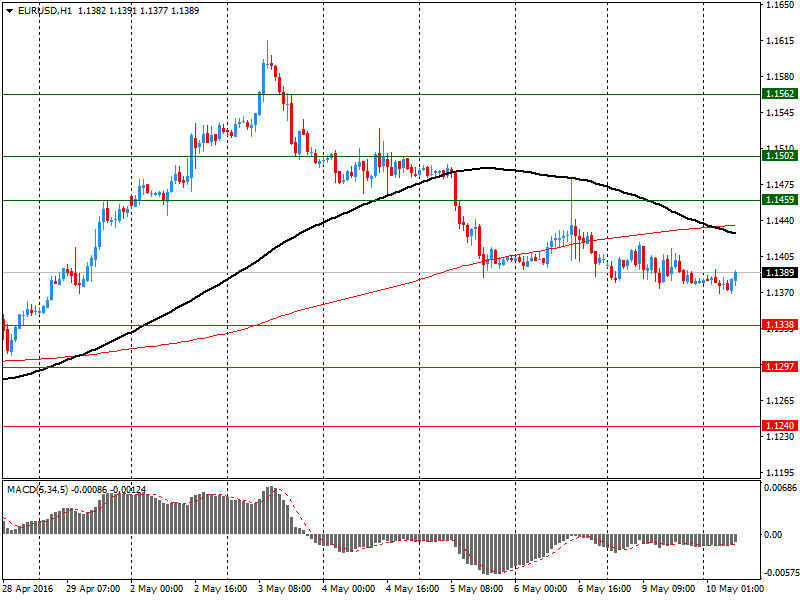Noticias del mercado
-
20:19
American focus: The US dollar strengthened against the Japanese currency
The yen continued to fall against the dollar, setting a new low in May. Since the beginning of the week, the yen fell nearly 2 percent against the background of strengthening risk appetite and rumors of a possible intervention by the Bank of Japan. On Monday, Japan's Finance Minister Taro Aso said that the Central Bank is ready to intervene in case of a sharp increase in the volatility of the national currency. Previously it was thought that Tokyo would not dare to intervene, given the US position, but Aso's words made market participants doubt it. Today, Aso reiterated his intention. "Certainly, we are ready to intervene if the yen continues to rise sharply," - said the Minister. According to Aso, the change rate of USD / JPY for two days at 5 yen can be called "somewhat excessive". Recall that in recent months, other officials of Japan have already made warning of the possibility of intervention designed to put an end to the strengthening of the yen. This strengthening leads to the fact that Japan is more difficult to achieve the acceleration of inflation and stimulate economic growth.
The British pound strengthened against the dollar, reaching yesterday's high but then went back to the opening level. Experts note the support provided pound increase in demand for high-risk currencies and expectations of the key events of the week. Tomorrow there will be the publication of reports on industrial production and production in the manufacturing industry, where they are likely to confirm the weakness of GDP in the 1st quarter. Meanwhile, on Thursday a meeting of the Bank of England. Economists will be closely watching those to preserve the unity of opinion among the leadership of the Bank of England after increasing downside risks to GDP growth. Over the weekend edition of the Guardian reported that at least one member of the Committee of Central Bank may act for the interest rate cut to stimulate the economy.
The euro traded mixed against the dollar, while remaining near the level of opening of the session. Against the background of the lack of new catalyst and the important economic data trading dynamics dictate change risk appetite. Little influenced by minor US reports. The Commerce Department reported that seasonally adjusted inventories in the warehouses of wholesale trade increased in March by 0.1%, reaching $ 583.6 billion. Last change coincided with forecasts. Meanwhile, the index for February was revised to -0.6% from -0.5%. Compared with March 2015 stocks increased by 0.3%. Wholesale sales of $ 430.7 billion., An increase of 0.7% compared with February. In annual terms, sales decreased by 2.0%. Also, the Ministry of Commerce said that the ratio of stocks to sales ratio was 1.36 months in March as February. Recall that in March 2015 the ratio was at 1.32 months.
Meanwhile, the review of vacancies and labor turnover (Jolts), published by the US Bureau of Labor Statistics showed that the number of vacancies in March increased to 5.757 million. Compared with 5.608 million. In February (revised from 5.445 million.). Analysts had expected a decline to 5.412 million.
-
17:45
BRC and KPMG sales monitor: U.K. retail sales declined by an annual rate of 0.9% on a like-for-like basis in April
According to the British Retail Consortium (BRC) and KPMG sales monitor, the U.K. retail sales decreased by an annual rate of 0.9% on a like-for-like basis in April, after a 0.7% fall in March.
On a total basis, retail sales were flat year-on-year in April.
"April saw the second month of flat sales for UK retailers with positive food sales offset by record declines in fashion. As a result, the 12-month average growth for non-food sales slowed to 2.5 per cent while for food sales it nudged back into positive territory at 0.1 per cent," BRC Chief Executive, Helen Dickinson, said.
-
17:41
Koichi Hamada, a key economic adviser to Japanese Prime Minister Shinzo Abe: the Bank of Japan would intervene in the foreign exchange market if the yen rises against the U.S. dollar to Y90-95
Koichi Hamada, a key economic adviser to Japanese Prime Minister Shinzo Abe, said in an interview with Reuters on Tuesday that the Bank of Japan (BoJ) would intervene in the foreign exchange market if the yen rises against the U.S. dollar to Y90-95.
"In case the yen happens to be so firm that it becomes between 90-95 yen per dollar, then Japan would have to intervene even if it angers the United States," he said.
Hamada also said that there was no need for further stimulus measures at the moment.
-
17:34
NIESR: Britain’s exit from the European Union would be a shock for the country’s economy
The National Institute of Economic and Social Research (NIESR) said on Tuesday that Britain's exit from the European Union (EU) would be a shock for the country's economy. The economy would expand 1.9% next year, lower than 2.7% growth if Britain remains in the EU.
The pound would depreciate in the longer-term, declining to close to parity with the euro by 2030.
-
17:01
NIESR cuts its GDP growth forecast for the U.K.
The National Institute of Economic and Social Research (NIESR) lowered its GDP growth forecast for the U.K. on Tuesday. If Britain remains in the European Union (EU), the U.K. GDP will be expected to grow 2.0% in 2016, down from the previous estimate of 2.3%. The NIESR expects the U.K. economy to expand at 2.7% in 2017, unchanged from the previous estimate.
The NIESR said that uncertainty around the referendum on Britain's membership in the EU weighed on the economy.
The unemployment rate is expected to decline to rise to 5.2% this year from 5.1% last year.
The Bank of England (BoE) is expected to start hiking its interest rates in November, according to NIESR.
The inflation is expected to be an average 0.3% this year and 0.9% next year.
-
16:36
Wholesale inventories in the U.S. increase 0.1% in March
The U.S. Commerce Department released wholesale inventories on Tuesday. Wholesale inventories in the U.S. increased 0.1% in March, in line with expectations, after a 0.6% fall in January. February's figure was revised down from a 0.5% decline.
The increase was mainly driven by a rise in inventories of non-durable goods. Inventories of non-durable goods increased 0.5% in March, while inventories of durable goods fell 0.1%.
Wholesale sales rose 0.7% in March, after a 0.2% fall in February.
-
16:25
Job openings climb to 5.757 million in March
The U.S. Bureau of Labor Statistics released its Job Openings and Labor Turnover Survey (JOLTS) report on Tuesday. Job openings jumped to 5.757 million in March from 5.608 million in February, beating expectations for a fall to 5.412. February's figure was revised up from 5.445 million.
The number of job openings rose for total private (5.251 million) and for government (506,000) in March from February.
The hires rate was 3.7% in March.
Total separations decreased to 5.045 million in March from 5.159 million in February.
The JOLTS report is one of the Federal Reserve Chair Janet Yellen's favourite labour market indicators.
-
16:16
Greek industrial production decreases 0.8% in March
The Hellenic Statistical Authority released its preliminary industrial production data for Greece on Tuesday. Greek industrial production decreased 0.8% in March, after a 4.5% fall in February.
On a yearly basis, industrial production in Greece slid at an adjusted rate of 4.0% in March, after a 2.5% decrease in February. February's figure was revised up from a 3.0% drop.
Production in the manufacturing sector decreased at an annual rate of 2.5% in March, output in the mining and quarrying sector dropped 23.8%, while electricity production slid by 5.1%.
-
16:02
U.S.: JOLTs Job Openings, March 5.757 (forecast 5.412)
-
16:00
U.S.: Wholesale Inventories, March 0.1% (forecast 0.1%)
-
15:56
Greek consumer prices increase 0.7% in April
The Hellenic Statistical Authority released its consumer price inflation data for Greece on Tuesday Greek consumer prices increased 0.7% in April, after a 1.3% rise in March.
On a yearly basis, the Greek consumer price index declined 1.3% in April, after a 1.5 fall in March. Consumer prices in Greece declined since March 2013.
Housing prices plunged at an annual rate of 4.8% in April, transport costs dropped by 4.5%, clothing and footwear prices were down 2.2%, while household equipment prices decreased 1.4%.
Prices of food and non-alcoholic beverages fell at an annual rate of 1.0% in April, while alcoholic beverages and tobacco prices increased by 1.4%.
-
15:39
National Federation of Independent Business’s small-business optimism index for the U.S. rises to 93.6 in April
The National Federation of Independent Business (NFIB) released its small-business optimism index for the U.S. on Tuesday. The index rose to 93.6 in April from 92.6 in March.
5 of 10 sub-indexes increased last month, 1 sub-index fell, while 4 were unchanged.
"The Federal Reserve continues to send out a message of economic weakness, indicating that the economy is too weak to be able to handle a 25 basis point increase in the Federal Funds rate. This reinforces the uncertainty felt on Main Street and supports the reluctance to spend and hire reflected in the NFIB measures," NFIB Chief Economist Bill Dunkelberg said.
-
15:39
Option expiries for today's 10:00 ET NY cut
USDJPY 108.50 (USD 884m) 108.75 (505m) 109.50 (842m) 110.80 (300m)
EURUSD: 1.1235-40 (EUR 408m) 1.1390 (200m) 1.1400 (281m) 1.1450 (407m) 1.1600 (771m)
GBPUSD 1.4450 (GBP 252m) 1.4600 (201m)
AUDUSD 0.7300 (AUD 203m) 0.7375 (200m) 0.7550-55 (326m) 0.7500 (355m) 0.7545 (652m)
USDCAD 1.3250 (USD 485m)
NZDUSD 0.6650 (NZD 482m) 0.6800 (238m) 0.6905 (202m)
EURJPY 123.50 (201m) 125.00 (386m)
-
15:00
Industrial production in Italy is flat in March
The Italian statistical office Istat released its industrial production data on Tuesday. Industrial production in Italy was flat in March, after a 0.7% decline in February. February's figure was revised down from a 0.6% decrease.
An increase in production of energy products offset drops in production of output of consumer goods, investment goods and intermediate products.
On a yearly basis, industrial production in Italy climbed at a seasonally-adjusted rate of 0.5% in March, after a 1.1% increase in February. February's figure was revised down from 1.2% gain.
-
14:44
Foreign exchange market. European session: the euro traded mixed against the U.S. dollar on the mixed economic data from the Eurozone
Economic calendar (GMT0):
(Time/ Region/ Event/ Period/ Previous/ Forecast/ Actual)
01:30 China PPI y/y April -4.3% -3.8% -3.4%
01:30 China CPI y/y April 2.3% 2.4% 2.3%
05:45 Switzerland Unemployment Rate (non s.a.) April 3.6% 3.5% 3.5%
06:00 Germany Current Account March 21.1 Revised From 20.0 30.4
06:00 Germany Industrial Production s.a. (MoM) March -0.7% Revised From -0.5% -0.3% -1.3%
06:00 Germany Trade Balance (non s.a.), bln March 20.2 Revised From 20.3 26.0
06:45 France Industrial Production, m/m March -1.3% Revised From -1.0% 0.3% -0.3%
06:45 France Industrial Production, y/y March 0.6% 0.5%
08:30 United Kingdom Total Trade Balance March -4.3 Revised From -4.84 -3.83
The U.S. dollar traded mixed to higher against the most major currencies ahead of the release of the U.S. economic data. Job openings are expected to decline to 5.412 million in March from 5.445 million in February.
Wholesale inventories in the U.S. are expected to rise 0.1% in March, after a 0.5% decrease in February.
The euro traded mixed against the U.S. dollar on the mixed economic data from the Eurozone. Destatis released its industrial production data for Germany on Tuesday. German industrial production fell 1.3% in March, missing expectations for a 0.3% drop, after a 0.7% decline in February. It was the biggest drop since August 2014.
German industrial production excluding energy and construction fell by 1.2% in March.
According to Destatis, Germany's trade surplus increased to €26.0 billion in March from 20.2 in February. February's figure was revised down from a surplus of €20.3 billion.
Exports climbed 1.9% in March, while imports were down 2.3%.
On a yearly basis, German exports decreased 0.5% in March, while imports slid by 4.3%.
Germany's current account surplus was €30.4 billion in March, up from €21.1 billion in February. February's figure was revised up from a surplus of €20.0 billion.
The French statistical office Insee its industrial production figures on Tuesday. Industrial production in France slid 0.3% in March, missing expectations for a 0.3% increase, after a 1.3% drop in February. February's figure was revised down from a 1.0% fall. Manufacturing output dropped 0.9% in March, while construction output jumped 1.2%.
The British pound traded mixed against the U.S. dollar on the U.K. trade data. The U.K. Office for National Statistics (ONS) released trade data for the U.K. on Tuesday. The U.K. trade deficit in goods narrowed to £11.2 billion in March from £11.4 billion in February.
The decline in deficit was driven by a rise in exports, which increased by £0.4 billion in March.
The total trade deficit for goods and services widened to £13.3 billion in the first quarter from £12.2 billion in the fourth quarter of 2015. It was the biggest gap since the first quarter of 2008.
The total trade deficit, including services, narrowed to £3.83 billion in March from £4.3 billion in February. February's figure was revised down from a deficit of £4.84 billion.
The Swiss franc traded lower against the U.S. dollar. The Swiss State Secretariat for Economic Affairs released its unemployment data for Switzerland on Tuesday. The Swiss unemployment rate increased to a seasonally adjusted 3.5% in April from 3.4% in March. March's figure was revised down from 3.5%.
On a seasonally unadjusted basis, the unemployment rate in Switzerland decreased to 3.5% in April from 3.6% in March, in line with expectations.
EUR/USD: the currency pair traded mixed
GBP/USD: the currency pair traded mixed
USD/JPY: the currency pair climbed to Y109.27
The most important news that are expected (GMT0):
14:00 U.S. Wholesale Inventories March -0.5% 0.1%
14:00 U.S. JOLTs Job Openings March 5.445 5.412
21:00 New Zealand RBNZ Financial Stability Report
23:00 New Zealand RBNZ Press Conference
-
11:46
Bank of France expects the country’s economy to expand at 0.3% in the second quarter
The Bank of France released its gross domestic product (GDP) forecasts for France on Tuesday. French economy is expected to expand at 0.3% in the second quarter, after a 0.5% growth in the first quarter.
The manufacturing business confidence index remained unchanged at 99 in April. Companies expect a growth in activity to accelerate in May.
The services business sentiment index remained unchanged at 96 in April. But services companies expect a rise in activity in May.
The construction business sentiment index increased to 97 in April from 96 in March. Companies expect an increase in activity in May.
-
11:42
U.K. trade deficit in goods narrows to £11.2 billion in March
The U.K. Office for National Statistics (ONS) released trade data for the U.K. on Tuesday. The U.K. trade deficit in goods narrowed to £11.2 billion in March from £11.4 billion in February.
The decline in deficit was driven by a rise in exports, which increased by £0.4 billion in March.
The total trade deficit for goods and services widened to £13.3 billion in the first quarter from £12.2 billion in the fourth quarter of 2015. It was the biggest gap since the first quarter of 2008.
The total trade deficit, including services, narrowed to £3.83 billion in March from £4.3 billion in February. February's figure was revised down from a deficit of £4.84 billion.
-
11:31
French industrial production slides 0.3% in March
The French statistical office Insee its industrial production figures on Tuesday. Industrial production in France slid 0.3% in March, missing expectations for a 0.3% increase, after a 1.3% drop in February. February's figure was revised down from a 1.0% fall.
Manufacturing output dropped 0.9% in March, while construction output jumped 1.2%.
Output in mining and quarrying, energy, water supply and waste management climbed 3.7% in March.
On a yearly basis, the French industrial production climbed 0.5% in March, after a 0.6% gain in February.
-
11:12
Germany's trade surplus increases to €26.0 billion in March
Destatis released its trade data for Germany on Tuesday. Germany's trade surplus increased to €26.0 billion in March from 20.2 in February. February's figure was revised down from a surplus of €20.3 billion.
Exports climbed 1.9% in March, while imports were down 2.3%.
On a yearly basis, German exports decreased 0.5% in March, while imports slid by 4.3%.
Germany's current account surplus was €30.4 billion in March, up from €21.1 billion in February. February's figure was revised up from a surplus of €20.0 billion.
-
11:06
German industrial production falls 1.3% in March
Destatis released its industrial production data for Germany on Tuesday. German industrial production fell 1.3% in March, missing expectations for a 0.3% drop, after a 0.7% decline in February. It was the biggest drop since August 2014.
February's figure was revised down from a 0.5% decrease.
The output of capital goods decreased 1.4% in March, energy output rose 0.3%, and the production in the construction sector was down 3.2%, while the production of intermediate goods fell 1.3%.
The output of consumer goods declined 0.2% in March.
German industrial production excluding energy and construction fell by 1.2% in March.
-
10:46
Swiss unemployment rate rises to a seasonally adjusted 3.5% in April
The Swiss State Secretariat for Economic Affairs released its unemployment data for Switzerland on Tuesday. The Swiss unemployment rate increased to a seasonally adjusted 3.5% in April from 3.4% in March. March's figure was revised down from 3.5%.
On a seasonally unadjusted basis, the unemployment rate in Switzerland decreased to 3.5% in April from 3.6% in March, in line with expectations.
The number of unemployed people in Switzerland fell by 5,784 to 149,540 in April from the previous month.
The youth unemployment rate was down to 3.2% in April from 3.4% in March.
-
10:36
Japanese Finance Minister Taro Aso: Japan is ready to intervene in the foreign exchange market
Japanese Finance Minister Taro Aso repeated on Tuesday that the government was ready to intervene in the foreign exchange market if the yen would raise further and if it would hurt the country's economy.
"It will be natural for us to undertake intervention if that kind of one-sided situation continues," he said.
-
10:30
United Kingdom: Total Trade Balance, March -3.83
-
10:24
Chinese consumer price index rises at annual rate of 2.3% in April
The Chinese National Bureau of Statistics released its consumer and producer price inflation data for China on Tuesday. The Chinese consumer price index (CPI) rose at annual rate of 2.3% in April, missing expectations for a 2.4% increase, after a 2.3% gain in March.
Food prices rose at an annual rate of 7.4% in April, while non-food prices increased 1.1%.
On a monthly basis, consumer price inflation decreased 0.2% in April, after a 0.4% fall in March.
The Chinese producer price index (PPI) dropped 3.4% in April, beating expectations for a 3.8% fall, after a 4.3% decline in March.
-
10:12
Minneapolis Fed Bank President Neel Kashkari: an interest rate hike in June is possible
Minneapolis Fed Bank President Neel Kashkari said on Monday that the Fed's cautious approach was "right", adding that an interest rate hike in June was possible.
He noted that he expected the U.S. economy to expand about 2% this year.
-
10:09
Option expiries for today's 10:00 ET NY cut
USD/JPY 108.50 (USD 884m) 108.75 (505m) 109.50 (842m) 110.80 (300m)
EUR/USD 1.1235-40 (EUR 408m) 1.1390 (200m) 1.1400 (281m) 1.1450 (407m) 1.1600 (771m)
GBP/USD 1.4450 (GBP 252m) 1.4600 (201m)
AUD/USD 0.7300 (AUD 203m) 0.7375 (200m) 0.7550-55 (326m) 0.7500 (355m) 0.7545 (652m)
USD/CAD 1.3250 (USD 485m)
NZD/USD 0.6650 (NZD 482m) 0.6800 (238m) 0.6905 (202m)
EUR/JPY 123.50 (201m) 125.00 (386m)
-
09:01
France: Industrial Production, y/y, March 0.5%
-
09:01
France: Industrial Production, m/m, March -0.3% (forecast 0.3%)
-
08:35
Options levels on tuesday, May 10, 2016:
EUR / USD
Resistance levels (open interest**, contracts)
$1.1562 (4261)
$1.1502 (4428)
$1.1459 (2127)
Price at time of writing this review: $1.1389
Support levels (open interest**, contracts):
$1.1338 (1704)
$1.1297 (3741)
$1.1240 (5140)
Comments:
- Overall open interest on the CALL options with the expiration date June, 3 is 63948 contracts, with the maximum number of contracts with strike price $1,1600 (5214);
- Overall open interest on the PUT options with the expiration date June, 3 is 86300 contracts, with the maximum number of contracts with strike price $1,1200 (8391);
- The ratio of PUT/CALL was 1.35 versus 1.33 from the previous trading day according to data from May, 9
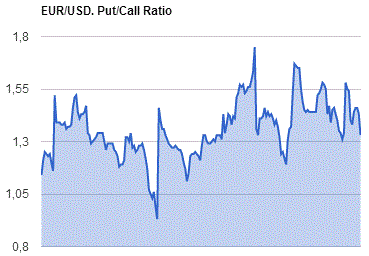
GBP/USD
Resistance levels (open interest**, contracts)
$1.4705 (1834)
$1.4608 (2086)
$1.4512 (2131)
Price at time of writing this review: $1.4414
Support levels (open interest**, contracts):
$1.4289 (2114)
$1.4192 (2696)
$1.4095 (1340)
Comments:
- Overall open interest on the CALL options with the expiration date June, 3 is 29009 contracts, with the maximum number of contracts with strike price $1,4500 (2131);
- Overall open interest on the PUT options with the expiration date June, 3 is 31424 contracts, with the maximum number of contracts with strike price $1,4200 (2696);
- The ratio of PUT/CALL was 1.08 versus 1.10 from the previous trading day according to data from May, 9
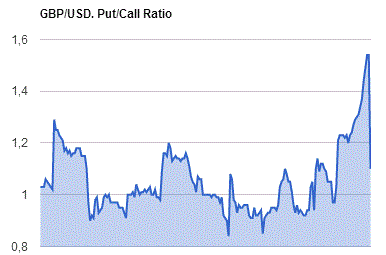
* - The Chicago Mercantile Exchange bulletin (CME) is used for the calculation.
** - Open interest takes into account the total number of option contracts that are open at the moment.
-
08:19
Asian session: The yen nursed broad losses on Tuesday
The yen nursed broad losses on Tuesday, beaten back from recent peaks following warnings by Japan that it was prepared to step in and weaken the currency.
In the wake of the yen's surge, Finance Minister Taro Aso on Monday said Tokyo is ready to intervene to weaken the currency if moves are volatile enough to hurt the country's trade and economy. Aso reiterated the message on Tuesday.
The firmer dollar, coupled with weaker commodity prices, saw the Australian, New Zealand and Canadian currencies all come under pressure. Prices for iron ore, oil, copper fell on Monday.
EUR/USD: during the Asian session the pair traded in the range of $1.1365-90
GBP/USD: during the Asian session the pair traded in the range of $1.4390-20
USD/JPY: during the Asian session the pair rose to Y108.85
Based on Reuters materials
-
08:01
Germany: Trade Balance (non s.a.), bln, March 23.6
-
08:01
Germany: Current Account , March 30.4
-
08:00
Germany: Industrial Production s.a. (MoM), March -1.3% (forecast -0.3%)
-
07:45
Switzerland: Unemployment Rate (non s.a.), April 3.5% (forecast 3.5%)
-
03:31
China: PPI y/y, April -3.4% (forecast -3.8%)
-
03:31
China: CPI y/y, April 2.3% (forecast 2.4%)
-
00:30
Currencies. Daily history for May 9’2016:
(pare/closed(GMT +3)/change, %)
EUR/USD $1,1381 -0,18%
GBP/USD $1,4407 -0,12%
USD/CHF Chf0,9712 -0,13%
USD/JPY Y108,47 +1,24%
EUR/JPY Y123,46 +1,02%
GBP/JPY Y156,26 +1,13%
AUD/USD $0,7313 -0,71%
NZD/USD $0,6764 -1,08%
USD/CAD C$1,2958 +0,37%
-
00:02
Schedule for today, Tuesday, May 10’2016:
(time / country / index / period / previous value / forecast)
01:30 China PPI y/y April -4.3% -3.8%
01:30 China CPI y/y April 2.3% 2.4%
05:45 Switzerland Unemployment Rate (non s.a.) April 3.6%
06:00 Germany Current Account March 20.0
06:00 Germany Industrial Production s.a. (MoM) March -0.5% -0.3%
06:00 Germany Trade Balance (non s.a.), bln March 20.3
06:45 France Industrial Production, m/m March -1.0% 0.5%
06:45 France Industrial Production, y/y March 0.6%
08:30 United Kingdom Total Trade Balance March -4.84
14:00 U.S. Wholesale Inventories March -0.5% 0.2%
14:00 U.S. JOLTs Job Openings March 5.445 5.412
21:00 New Zealand RBNZ Financial Stability Report
23:00 New Zealand RBNZ Press Conference
-
